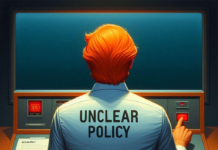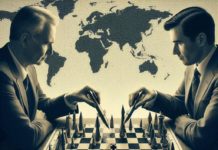INVESTMENT PERSPECTIVE
By J Mulraj
Feb 11- 18, 2023
Are Capital Markets, Trade and Investment Flows, Oil Markets Truly Free?
Do we really have free markets? Janis Joplin summed it up rather well in the song ‘Me and Bobby McGee’, saying ‘freedom is just another word for nothing left to lose’.
There was a decade when, thanks to globalization, markets were free. Increased global trade, access to global capital, and higher investment flows led to a surge in economic growth which lifted millions out of poverty. Then the atmosphere got vitiated, when US President Donald Trump felt, not unjustifiably, that China had taken advantage of the global trading system, had stolen technology, had not allowed full access to its markets as it had promised to, and had a running and rising trade surplus against the US. The sanctions, penalties and trade barriers that ensued have wounded globalization.
We don’t have free markets.
Start with the cost of capital, which is the very foundation of free trade. It’s cost, like of everything else, should be determined by demand for, and supply of, money. But for years, interest rates have been manipulated by Central Banks, led by the Federal Reserve of USA, which is the thousand pound gorilla in the room. The flood of money, termed Quantitative Easing, was used to fight the 2008 Global Financial crisis and later became a tsunami when Covid hit. Interest rates went down to zero (ZIRP, or Zero Interest Rate Policy) and then, shockingly, to NIRP ( negative interest)! So absurd had it become that commercial banks in Belgium were paying home loan borrowers interest, to borrow from them! Such interest rate policies, un-correlated to demand and supply, causes distortions. People overpay for assets, because the cost of borrowing is so low, creating asset bubbles. Bubbles burst, causing pain (balloons have to be shot down).
So we see assets, especially in developed countries, popping. Stock and bond markets, crypto currencies, and real estate, are falling, now that the central banks are raising interest rates. But the excess money supply created by QE is still sloshing around, creating inflation.
Japan’s Central bank, too, is stepping into financial markets, trying to manage the yield curve. It manages the yield curve by printing money to buy the 10 year bonds, issued by the Japanese Government, so that the market price of the bonds don’t fall, thereby keeping bond yield at 2%. Since Dec 22 it has bought 10 year bonds worth $ 240 b. which is 6% of Japan’s GDP! In other words the Japanese bond market is not a free market. It always has the Bank of Japan as a buyer. Similarly, BoJ has also bought huge amount of stocks, owning over 10% of almost all company equity.
Nor are trade or investment flows free of policy influence. The US Congress has passed 3 bills , totaling $ 2 trillion, including the Infrastructure Act, the Chips Act and an Inflation Reduction Act, which is an Irish stew of various measures disguised under the noble cloak of inflation reduction. Generous subsidies are provided, but only if both manufacture, and jobs, are in America. This has angered American allies. European makers of wind turbines, for example would find getting skilled American labour both difficult and expensive, making wind power costlier. Taiwanese chip maker TSMC, which set up a plant in USA and hired American workers, has not yet got the promised subsidy.
The ability of the world’s largest economy to attract manufacturing investment with subsidies, and to also be able to sanction foes, cutting them off the international SWIFT payment system, means that both trade and investment flows are not ‘free’.
Then consider the global market for crude oil, the primary source of energy that drives the world and heats/cools homes. The producers have formed a cartel, OPEC Plus, in order to regulate prices using production quotas, divided amongst members. This is good, as it seeks to prevent sudden spikes, or falls, in prices.
More recently, the buyers, from the developed countries, have collectively sought to cap crude oil prices, in order to deprive Russia of higher revenue from sale of it, thus curtailing its ability to continue the Ukraine war. The buyers WANT Russia’s crude oil, (an alternate energy system is not yet ready) but at a lower price. They seek to enforce it by leveraging their control over global shipping and insurance. Tankers carrying crude oil, as well as insurance companies, both predominantly western, would refuse to carry it unless invoiced for less than $ 60/ barrel, the price cap unilaterally determined by a few buyers. So the oil markets are not free either.
So, if
> capital,
> trade and investment flows and
> oil markets are not free, are we following the dictates of a free market? No.
So, if not, are price signals emanating from them, a genuine reflection of demand and supply? No.
Adam Smith, the father of capitalism, is, perhaps, rolling in his grave!
The energy policies of the developed world are weird. The collective west pushed Russia into conflict with Ukraine, after several pleas it made, to enter into negotiation, were blithely ignored. It publicly warned to eliminate fossil fuel companies. Then, without having in place alternative, renewable energy driven, infrastructure, USA goaded Europe, led by Germany, to stop buying Russian gas. Cheap Russian, sent through 2 Nordstream pipelines, were cheap, and environmentally friendly. Cheap Russian gas was the foundation of Germany’s economic success and ability to have a trade surplus. Expensive LNG, now bought from others, especially USA has made German manufacture uncompetitive, enough for them to consider relocating.
Pulitzer prize winning journalist Seymour Hersh has revealed, with plausible detail, that it was America which blew up the Nordstream pipelines. This is an act of war. It is intended to forever remove German, and EU, dependence on Russia for energy needs. In blowing up the pipelines, America also showed disdain for the environment; the escape of methane gas is more harmful than carbon dioxide.
Last week the market was flat, with the Sensex hovering around the 60k mark.
Some commentators, expecting China to reopen its economy, are fearful of the spurt in crude oil prices, hence of inflation, that would ensue. That, in turn, would continue the tight money policy of the US Fed for longer. However, the sharp fall in the Shanghai Containerized Freight Index, from 3500 in Jan 22 to under 1000 now does not suggest an imminent opening up.
It was free markets, free trade and investment flows, and a global oil market, that helped growth in a globalized world. Now markets are splintered. Russian oil goes to buyers like China and India, at different prices. It’s gas goes to China via newly built pipelines, entailing fresh capital expenditure. The old capital expenditure has been destroyed.
So much money is wasted on wars, both direct and proxy wars. Ukraine is acting as a proxy for the collective west. The collective west contributes weaponry. Ukraine contributes the lives of its soldiers. Weapon inventory with USA and NATO is dangerously low. Should conflict spread to NATO, or should USA become involved in one, eg Taiwan, its ability to fight a prolonged conflict is dissipated. The Chinese balloon is an example of asymmetrical warfare. The cost of the balloon was far far lower than the cost of shooting it down, using the F22 Raptor, one of the most expensive planes, and Sidewinder missiles, @$ 400,000 a pop, for the purpose.
A WhatsApp cartoon I received sums it up well. Some people, after the world is destroyed, taking comfort that there was a sweet moment, before it all blew up, when shareholder value had been raised. Sigh.
Picture Source: https://indianliberals.in/bn/content/philosophy-of-freedom/
Comments may be sent to: jmulraj@asiaconverge.com










































COMMENTS